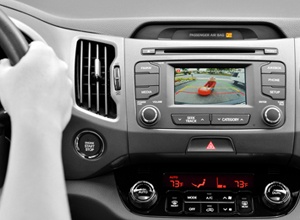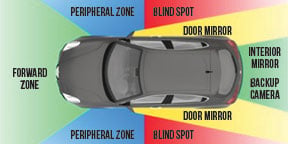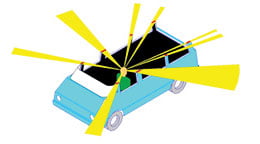 Isn’t technology great? Every day we see new technology that makes our lives better, more efficient, and safer.
Isn’t technology great? Every day we see new technology that makes our lives better, more efficient, and safer.
But sometimes you have to wonder if these great inventions make our lives better and safer. Take the backup cameras in our cars. While they help provide a view we usually can’t see, they can lead to more accidents because drivers may rely too heavily on them.
The primary purpose of backup cameras is to prevent “back over” accidents of young children who are not otherwise visible to the driver. That said, the cameras are typically located on the back of the car at about waist level. The camera provides a great view of objects immediately behind the vehicle and 50 to 70 feet behind the car. The camera view typically extends to 8 to 10 feet on each side of the car.
Despite the image quality and size of the screens in the car, backup cameras only provide a limited view of what’s going on behind and around the vehicle. Most cameras only provide an 80-degree field of sight behind the car. That leaves 280 degrees of view around the vehicle not accounted for if the driver only views the backup camera while backing. That’s why it’s critical that drivers not become overly dependent on backup cameras for their safety and those around them.

Using the backup camera only, limits your view to 80 degrees of your surroundings.
Backing is the most difficult maneuver in a car, yet we perform it when we usually get into the car and aren’t yet in “driving mode.” When you’ve been out driving for a while and are in driving mode, practice backing into parking places whenever practical. It allows you to go past the opening before you back into it and get a complete view of any obstructions like children’s toys, etc.
To prevent property damage and personal injury, every driver should practice these steps for safe backing:
1. Whenever possible, park so you avoid backing altogether.
2. Walk around the vehicle before backing up to ensure your path is clear of people and obstructions. Remember this acronym: G.O.A.L. – Get Out And Look.
3. Back slowly, watching for people, vehicles, or objects entering your path of travel.
4. Frequently check mirrors and blind spots, scanning from left to right. Check the left blind spot by looking over your left shoulder, check the left side view mirror, check in front of the vehicle, check the rearview mirror, check the backup camera screen, check the right side view mirror, check the right blind spot by looking over your right shoulder. Repeat this frequently while backing.

Turning your head while using the side mirrors, review mirror, and backup camera, dramatically improves visibility and reduces the potential for accidents.
Do you have any tips or information you’d like to share? I’d love to hear from you. Please share them in the box below.





